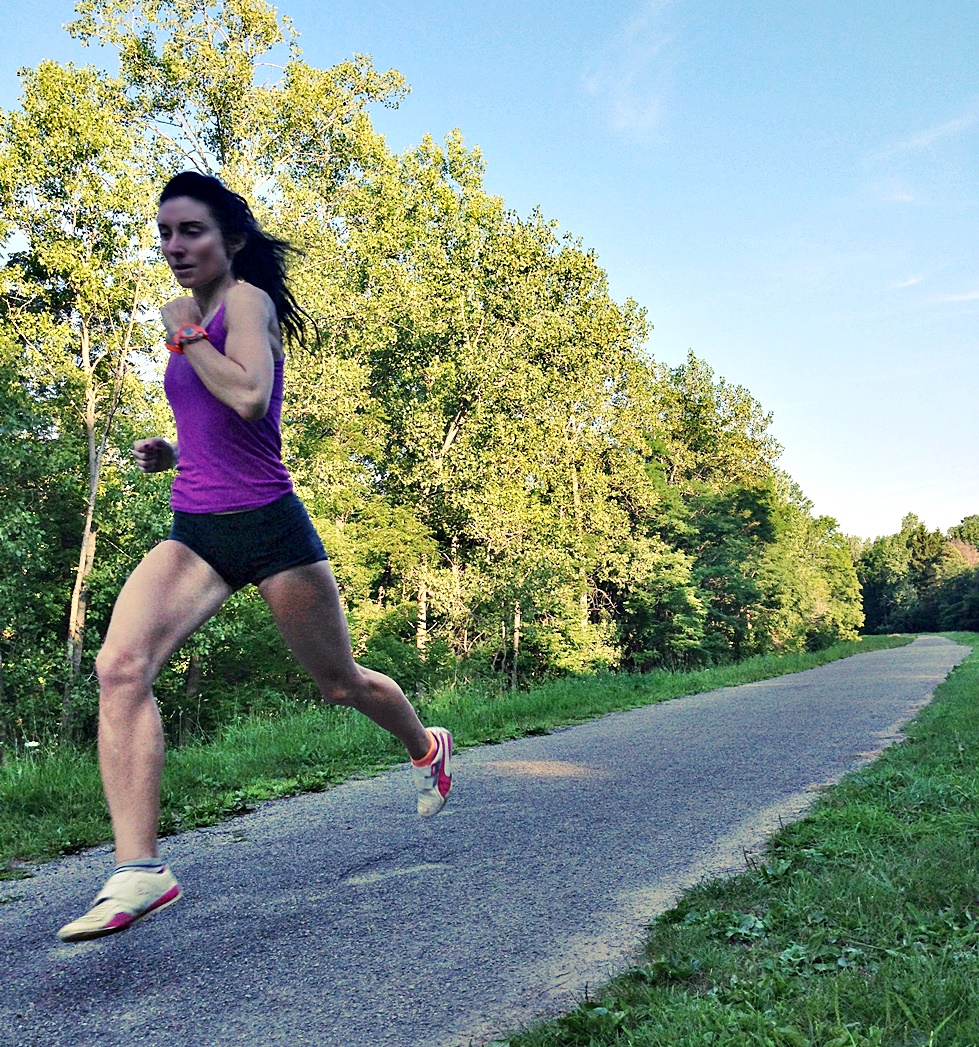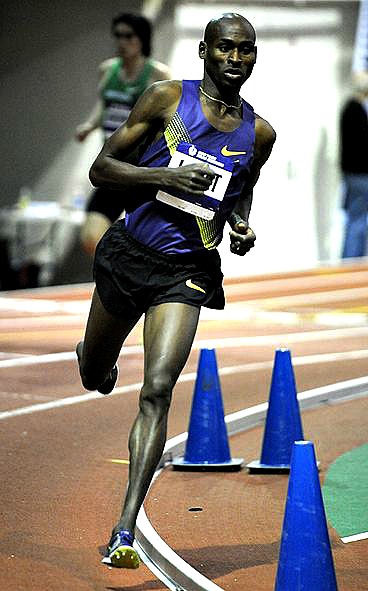Speed work is a great way to improve your forefoot running form; whereas running too slow can compromise it.

How to Improve Your Forefoot Running Form
Runners learning forefoot strike running, start off by running too slow with the assumption that running slow during transition reduces the risk of injury.
However, running slow when transitioning to forefoot running may be the big roadblock that prevents a runner from maintaining proper minimalist running form.
A more convenient alternative to running slow is running faster to achieve better forefoot strike accuracy.
Why not run slow?
Runners who run slower than normal running speeds display larger stride-to-stride variability which is reduced when running fast.
- A larger stride-to-stride variability means runners have more freedom to change their foot strike pattern and other leg mechanical variables such as stride length and ground contact time. This could mean that the risk of heel striking may increase when running at slower speeds.
However, running faster at speeds faster than your race pace promotes forefoot striking consistency because it promotes greater mechanical conformity with respects to foot strike and timing.
For example, heel strikers lift the forefoot back to heel strike. A heel striker transitioning to forefoot running would benefit from running faster because less time would be allotted for dorsiflexion, which would encourage more plantarflexion and better forefoot strike accuracy.

A study by Breine et al. found that a forefoot strike landing was a consequence of running at faster speeds and most elite distance runners tend to be forefoot strikers, suggesting that there is a performance benefit with forefoot running.
Another reason the body takes on a forefoot strike landing over a heel strike landing at faster running speeds is to reduce musculoskeletal overloading.
Initial contact during running is said to be the most forceful phase of running whereby in heel strike running, at initial contact, peak vertical instantaneous loading rates are much higher than forefoot running. This is why at faster running speeds, most runners shift away from a heel strike landing towards a forefoot strike landing.
The take home message is that runners are afraid of running faster because faster running is believed to inflict greater loads on the body. However, this is true for heel strike running, but not for forefoot strike running.
Most elite distance runners are forefoot strike runners because forefoot strike running does not generate more impact at faster speeds, it generates promising performance gains with better safety.
Don’t Miss These Forefoot Running Training Tips:
- How to Swing Your Legs
- Take Your Barefoot Running Training to the Next Level
- Where to Get the Vibram FiveFingers for Forefoot Running
- Mo Farah Training Advice
References:
Breine at el. Relationship between running speed initial foot contact patterns. Med Sci Sports Exerc, 2014; 46(8): 1595-1603.
Mann et al. Association of previous injury and speed with running style and stride-to-stride fluctuations. Scand J Med Sci Sports, 2015; doi:10.1111
Bretta Riches
BSc Neurobiology; MSc Biomechanics candidate, ultra minimalist runner & founder of RunForefoot. I was a heel striker, always injured. I was inspired by the great Tirunesh Dibaba to try forefoot running. Now, I'm injury free. This is why I launched Run Forefoot, to advocate the health & performance benefits of forefoot running and to raise awareness on the dangers of heel striking, because the world needs to know.
Latest posts by Bretta Riches (see all)
- Can You Run In Barefoot Shoes? Yes, But DON’T Heel Strike! - 21/07/2024
- Why Cushioned Running Shoes Are Really Bad for Your Feet - 19/07/2024
- Do Cushioned Running Shoes Cause Injuries? - 17/07/2024

Leave a Reply